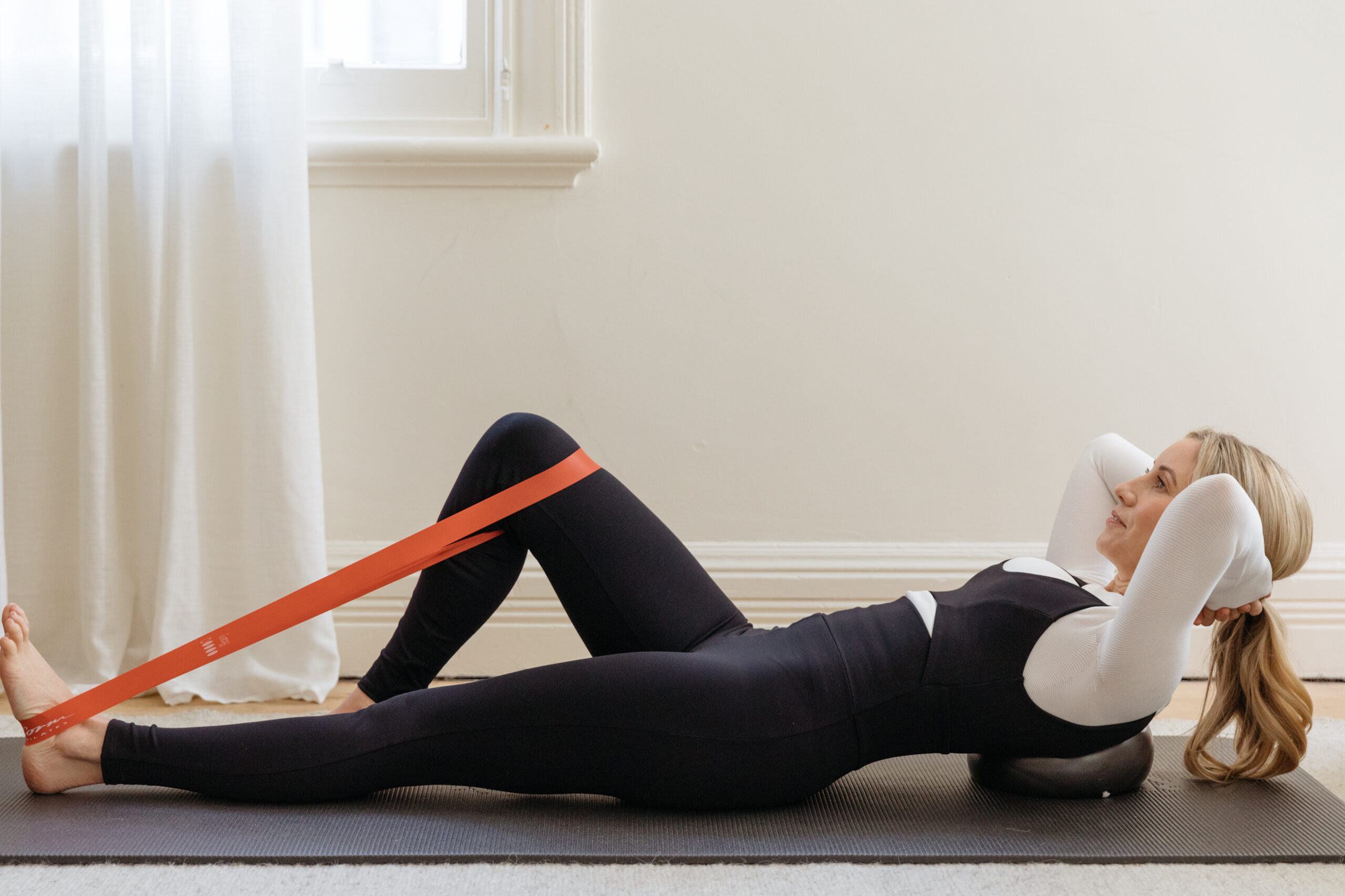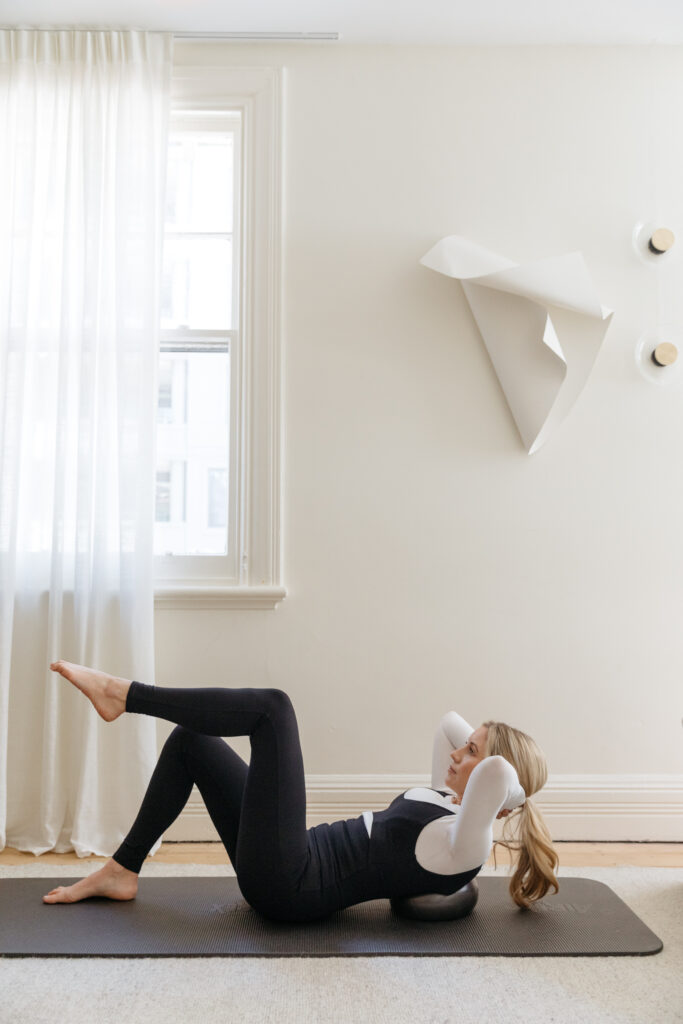Are you struggling to engage your muscles?
Can you feel your abdominals connect and activate every time?
Are you failing to see the results you’re looking for?
It might be time to reassess your form.
Your form and technique are essential to mastering each position, moving efficiently and effectively and creating change in your body. To begin, let’s start with the basic five fundamental positions designed to enhance the recruitment of your muscles and improve your overall technique. These fundamental positions can apply to a range of movements and exercise sequences. Once mastered, you will find that deep muscle connection, build strength and tone and achieve your long-term goals.
EXERCISE NO.01 / NEUTRAL SPINE
Neutral spine is the most neutral position for your pelvis and spine – it’s ideally how our body should hold itself. When your body can achieve this position, it enables all of your surrounding stabilising muscles to engage and properly recruit.
A neutral spine can be achieved in all planes of movement – from lying on your back, front or side to standing – so it’s important to be mindful of maintaining neutral spine with each movement.
When in neutral spine, your lower abs, hamstrings and glutes will work and strengthen more effectively.
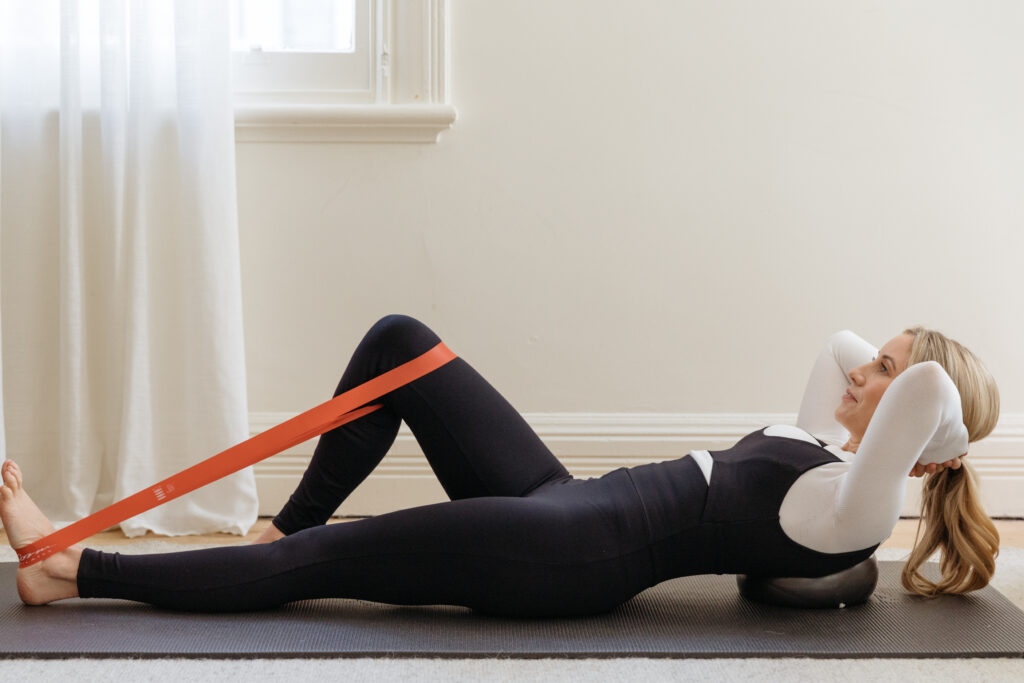
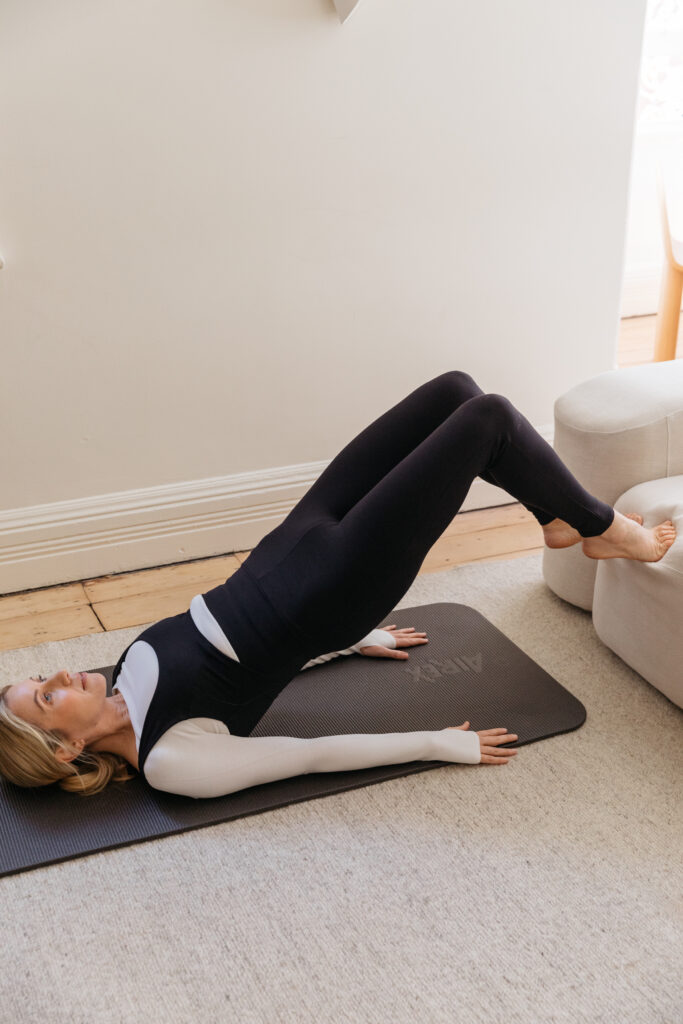
EXERCISE NO.02 / PELVIC CURL
The main function of a pelvic curl is to mobilise the lower spine. Our lifestyles, office jobs and commute times contribute to a more sedentary lifestyles which means most people are tight in either their hip flexors or lower lumbar and this can contribute to restricted movement and inhabit the health of the spine.
The key to mastering the pelvic curl is to have knees bent with feet place hip-width apart on the mat, arms reaching long by your side. Deep inhale as you tilt your pubic bone to spine and roll up into the bridge position, making sure to maintain a connection between your bottom ribs and hips. As you roll back down to the mat, imagine you’re placing each vertebrae of your spine onto the mat one after the other – your tailbone to be the last to rest on the mat.
Moving through a pelvic curl in this controlled way will help to effectively mobilise your lower spine, work on torso stabilisation and help you have a successful workout every time.
EXERCISE NO.03 / CHEST LIFT
The chest lift is often a movement that’s misunderstood. When you ask a person to chest lift, more often than not they will fold in the middle trying to reach their forehead to their knees.
When performing a chest lift, you should maintain a neutral spine position and focus on sliding your ribs to your hips as you lift your shoulders off the mat.
Start in the same position as a pelvic curl, place your hands behind your head with your thumbs running down the back of your neck – this helps to create a hammock for your head to sit in as you move. Your head should feel heavy in your hands as you lift up and slide your ribs to hips, maintaining a neutral position.
Your heavy head allows for your abdominals to properly recruit, and prevents your neck muscles taking on the job of the lift. Maintain your line of sight towards your knees, to protect your neck.
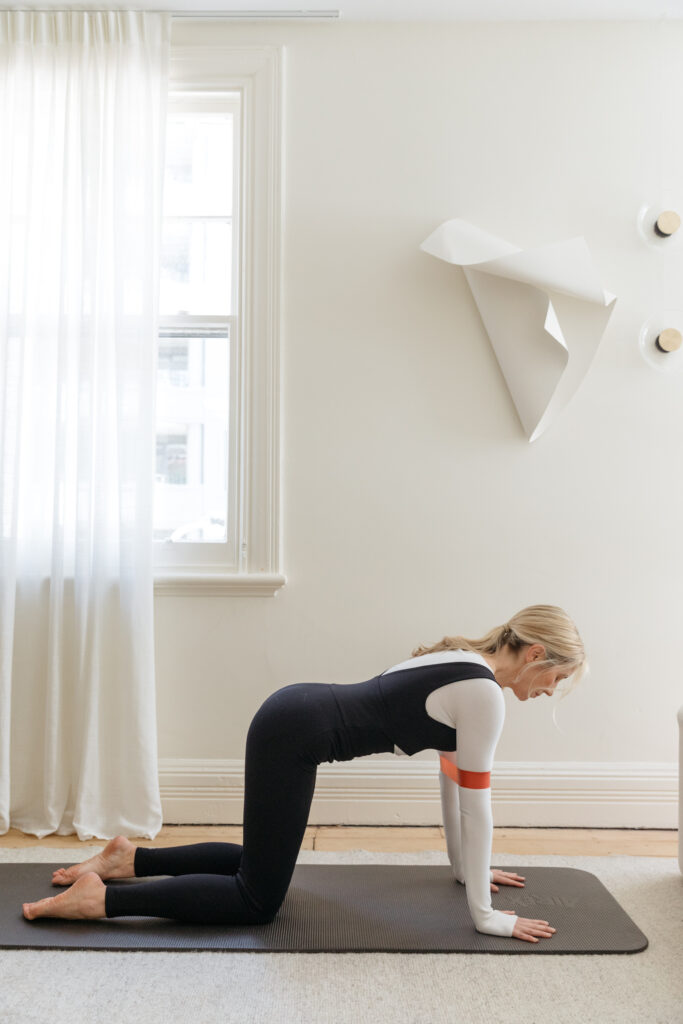
EXERCISE NO.04 / FOUR-POINT KNEELING
Four-point kneeling might seem simple, but this position is an important foundation exercise for stabilisation, strengthening your arms and back muscles while focusing on working your abdominals.
To master four-point kneeling, you need to maintain a neutral spine. Place your hands directly beneath your shoulders and your knees beneath your hips. Spread your fingertips wide and imagine you’re pushing your hands into the mat – this helps to avoid hanging your torso from your shoulders and sinking. Engage your abs by pulling your belly button to your spine and keep your neck long by looking to the ground.
Focus on stability in this movement to force your body to recruit the correct muscles during any exercise commencing in this position.
EXERCISE NO.05 / LUNGE POSITION
The lunge is a balance challenge that – if done regularly (and correctly) – can easily be mastered. the focus in this starting position is on your hip flexors, hamstrings and of course, your stability. To nail the correct positioning for a lunge keep the front knee above the ankle at all times, with your back leg stretched out behind you. It’s common for the extended leg to want to pull the hip back with it, but to achieve success with this movement be sure your hips are square to the front. With hands on hips, keep your torso in neutral and lean forward keeping in one nice long line from your back heel to the top of your head.
